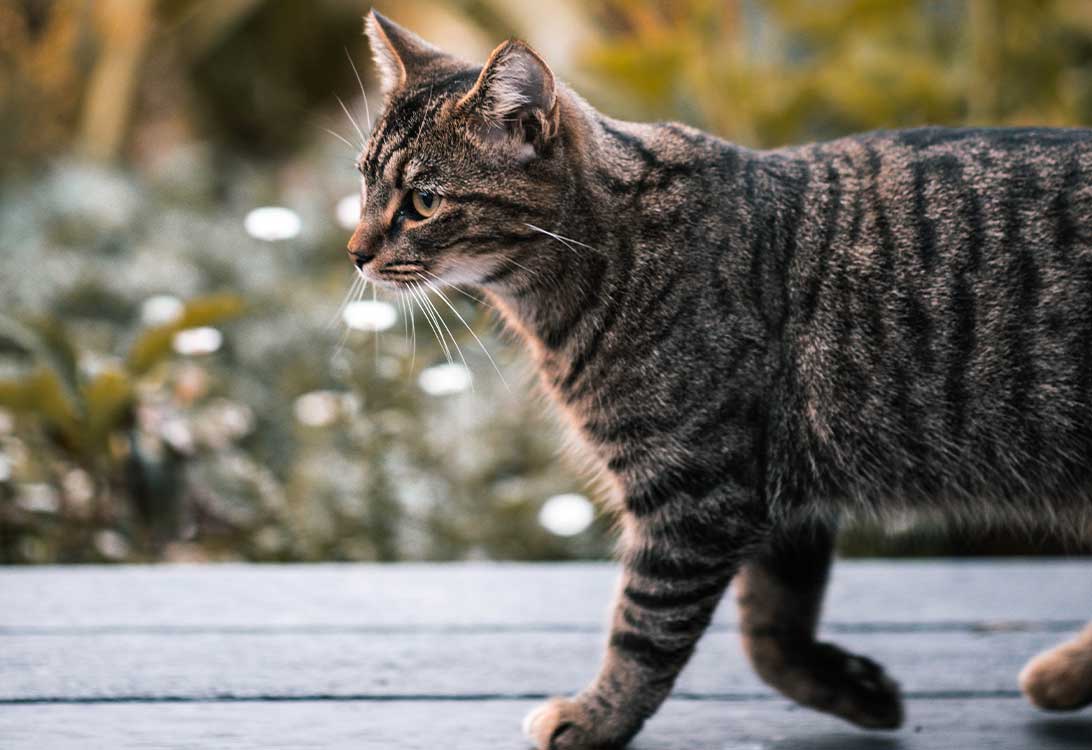Is Your Cat Healthy? A Checklist

“How can I tell if my cat is healthy?”
It’s a great question! Cats are quirky, and it’s sometimes hard to tell whether they’re sick, moody, or just being cats! We put together a very general checklist of things to look for when you’re determining whether your cat’s health is up-to-snuff. Remember, this list is just for reference; if you have any concerns about your cat’s overall health or about something specific, call to schedule a convenient appointment with a licensed veterinarian.
❏ Vaccinations Up to Date
The most important thing you can do for your cat’s health is to ensure she’s been fully vaccinated. Cats should be vaccinated against rabies, feline leukemia, immunodeficiency viruses, and more. Your cat should also be on heartworm, tick, and flea medications to prevent contractible diseases and worm infestations. If you’re unsure whether your cat is/was properly vaccinated, contact a vet.
❏ Proper Diet and Weight
Your cat should eat regularly and exercise at least moderately. Your cat shouldn’t have a saggy belly nor should their ribs be clearly visible through their skin. When looking down on your cat from above, she should have an “hourglass” shape. There is no perfect weight for a cat, but if yours rapidly drops or puts on weight, there may be something amiss.
❏ Proper Breathing
Your cat’s breath shouldn’t be raspy, ragged, or strained. Cats generally breathe around 20-40 times a minute, but that number varies cat-by-cat. You should really only worry if your cat’s breathing changes suddenly.
❏ Heart Rate
Like breathing, your cat’s heart rate is unique to her body; it might change a bit with a new exercise regimen or even with age. Cats’ hearts beat fast – about 140-200 beats per minute.
❏ Clean, Healthy Teeth
You may not be able to readily tell whether your cat’s teeth are healthy. As long as she’s eating and behaving normally and regularly visiting the vet for checkups, her teeth are probably fine. If you notice terribly bad breath, trouble chewing, or visibly broken or cracked teeth, call the vet.
❏ Mites, Fleas, and Ticks
Your cat should be free of any parasites! Visible fleas, ticks, mites, or other bugs are cause for concern and necessitate a call to the vet. Signs of an infestation include dandruff, shaking of the head/scratching of the ears, and red welts on the skin or bald patches in her fur.
❏ Eye Health
Your cat’s eyes should be clear and free of any discharge. If you notice bloodshot eyes or a “third eyelid” (a white film over the eyeballs), be sure to contact the vet for a checkup.
❏ Healthy Fur
Healthy cat fur is thick and without unexplained bald spots. Healthy cats shed regularly, particularly in spring and fall, but excessive or heavy shedding might be a sign of disease.
❏ Behavior and Behavioral Changes
Every cat behaves differently! Healthy cats can be sleepy, energetic, aloof, clingy…just like people, all cats have different personalities. Behavioral changes can be sign of illness. Look for things like a suddenly-lethargic cat, a cat that becomes ravenous overnight, sudden meowing from a typically-quiet cat, etc. These guidelines can help you keep tabs on some of the most noticeable signs of health in your cat. If for any reason – even if it’s just ‘cat owners’ instinct!’ – you feel as if your cat is unwell, contact a vet for a thorough evaluation. Veterinarians are specifically trained to look for small, unique symptoms of illness that you might otherwise miss.


